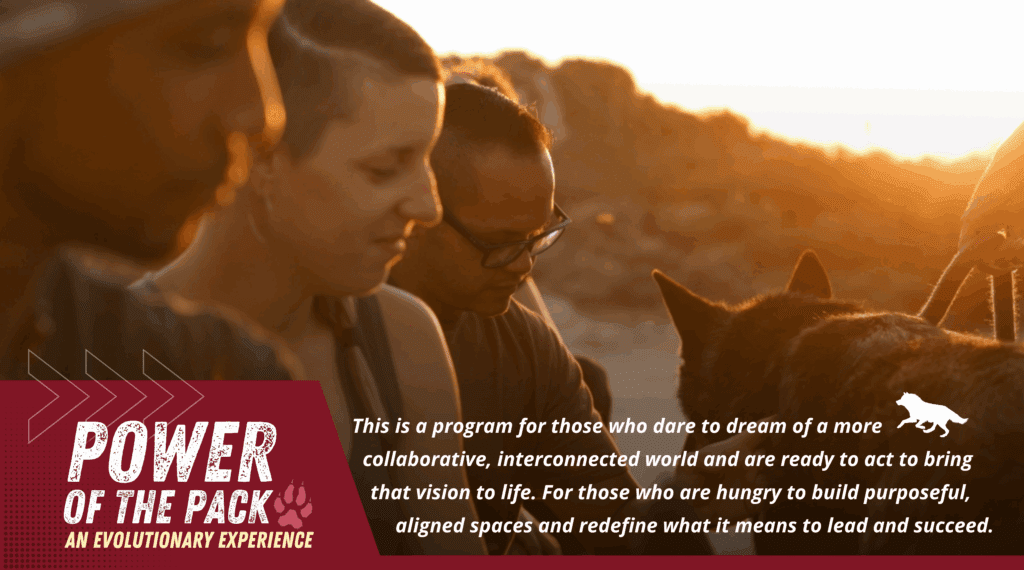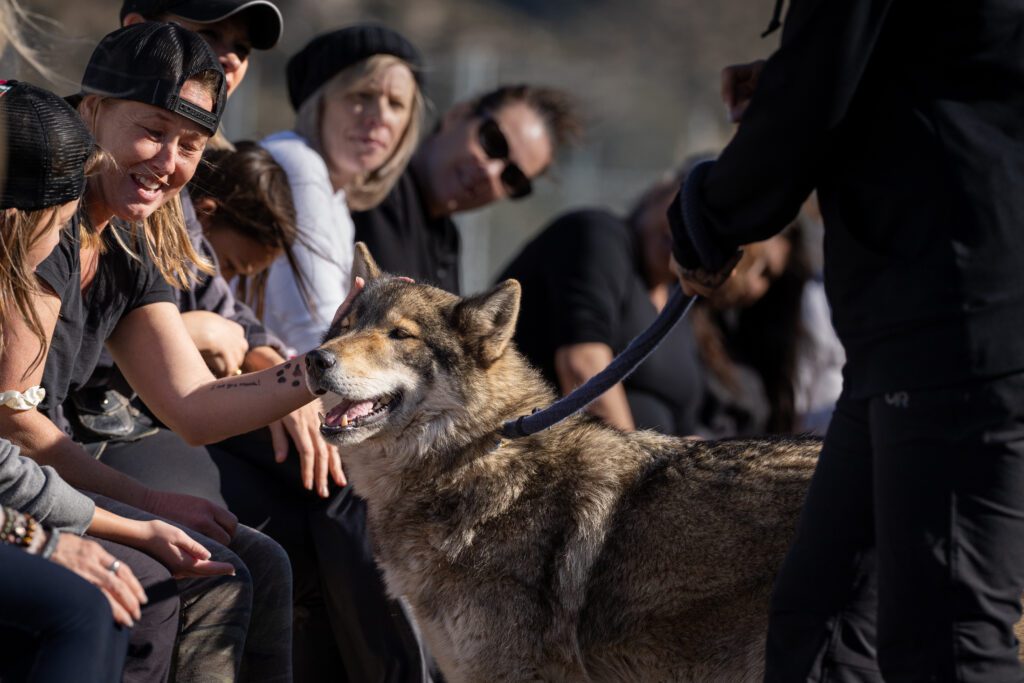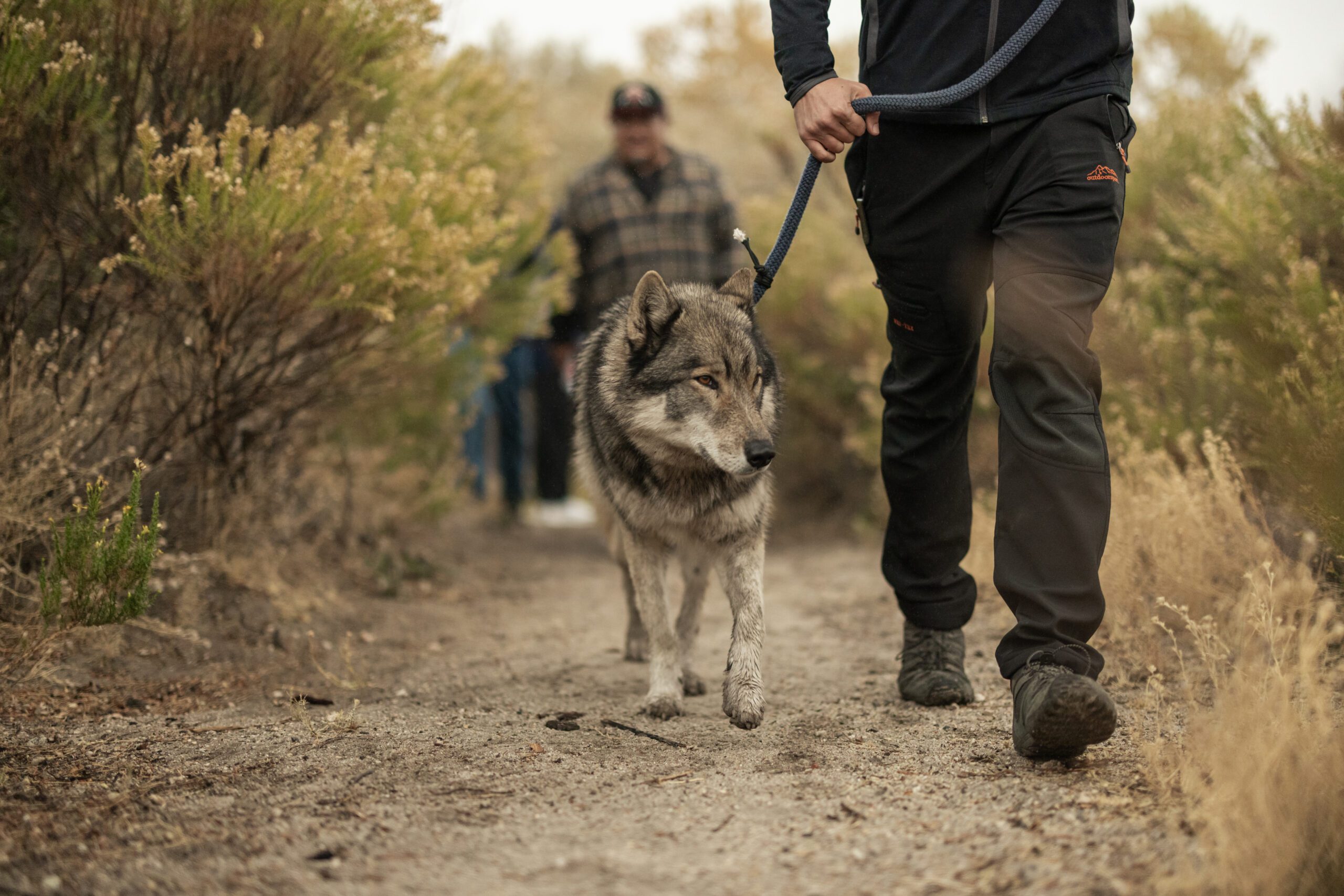An Evolutionary Experience
Power Of The Pack
Single or Multi-Day Programs for Corporations and Organizations

At Wolf Connection, we believe that wolves offer humanity a pathway to evolve, leading us to a higher level of existence. While popular culture portrays wolves as power-hungry and driven by hierarchy, the truth is far more profound. Wolves embody the ultimate expression of teamwork, collaboration, and strength achieved from a foundation of deep love and respect for one another.
Our unconventional approach to team-building harnesses the wisdom of the wolves, using their example of cooperation to fuel the growth and success of individuals and organizations alike.

Wolf Connection is the global leader in restoring the primal bond between wolf and human. As the only place on Earth offering the trademarked Wolf Therapy® experience, we invite you to bring your pack, unlock untapped potential, and awaken new strengths within yourself and your team. Located in the mountains above Los Angeles, our 165-acre sanctuary is a safe haven for wolves rescued from illegal ownership, abandonment, and abuse.
4-HOUR PROGRAM:
- Step into the world of the wolf
- Find your howl
- Tour: Learn about the pack roles and wisdom of our resident wolf teachers
- Walking with Wolves: Immerse yourself in their world and environment
- Forge the Pack Bond
- Closing Howls: Honor the voice of each pack member
- Lunch available for an additional cost
2.5-HOUR PROGRAM:
- Step into the world of the wolf
- Find your howl
- Tour: Discover the pack roles and stories of our resident wolf teachers
- Walking with Wolves: Attune to their world and explore their environment
- Closing Howls: Honor the voice of each pack member
- Lunch available for an additional cost


A CLOSER LOOK...


Your team’s visit begins with a warm welcome, featuring light snacks and refreshments, creating space to settle in and connect. The experience opens with a grounding circle and guided awareness practice, inviting each participant to share their voice and set a personal “pack intention” for the day. Guests are then introduced to one or two wolves in person, learning to connect through presence and nonverbal communication, just like wolves do.
This is followed by a powerful moment of silent witnessing, observing the wolf pack as they interact, offering reflection on leadership, trust, and authentic connection. A guided tour of the Wolf Den deepens the experience, sharing the stories of individual wolves and their roles within the pack, highlighting parallels with human teamwork and collaboration.
The journey continues with a nature hike alongside the wolves or a visit to their habitat, encouraging awareness of both self and the natural world. The day concludes around a bonfire with s’mores (weather permitting), a heartfelt closing circle, and the drawing of symbolic wolf cards—leaving your team with a sense of insight, unity, and renewed purpose.
COST:
4-HOUR PROGRAM:
$6,000 for 1-10 participants
$8,000 for 11-20 participants
$9,000 for 21-30 participants
$10,000 for 30-40 participants
$12,000 for 40-50 participants
2.5-HOUR PROGRAM:
$4,000 for 1-10 participants
$6,000 for 11-20 participants
$7,000 for 21-30 participants
$8,000 for 30-40 participants
$10,000 for 40-50 participants
- connect@wolfconnection.org
- PO Box 504 Acton, CA. 93510
- (661) 434-7992
